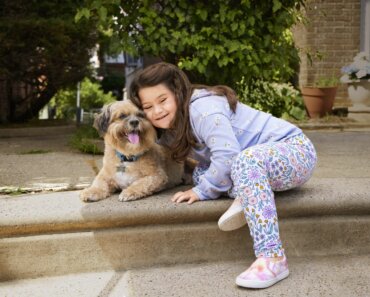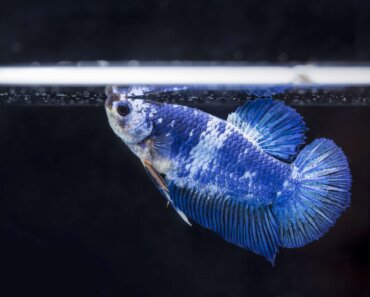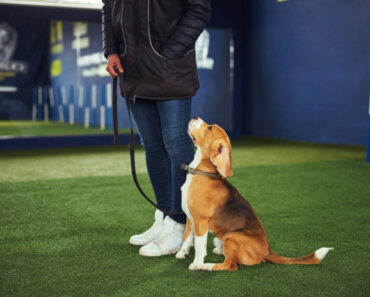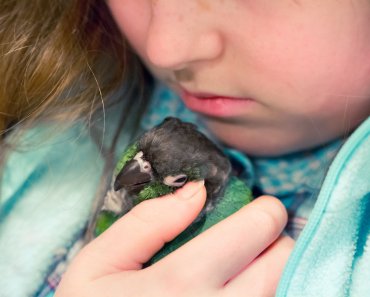From pest repellents to breath fresheners, these fragrant and effective essential oil blends are created especially for dogs.
Anyone who has worked with essential oils, as I have, knows how amazing they are. When high quality products are used properly, essential oils offer profound healing effects to both humans and dogs. This article presents some canine-designed essential oil blends you can make at home for everything from nausea and bad breath to repelling ticks and other pests.
A long history
- The distillation and use of essential oils goes back thousands of years. Between 2697 and 2597 B.C.E., the Chinese used aromatic plants for harmony and balance; the ancient Egyptians used infused oils and herbal preparations; traditional Ayurvedic medicine incorporated essential oils into healing; and Hippocrates, the father of modern medicine, practiced fumigations for aromatic and medicinal purposes.
- Doscorides, an ancient Greek physician, wrote the De Material Medica which described the properties of at least 500 plants.
- In the 11th century, the Persians invented a coiled cooling pipe for distilling plant oils, and in the 12th century, lavender was distilled for its medicinal properties.
- By the 15th century, more plants were being distilled for their essential oils, including frankincense, juniper, rose, sage, and rosemary.
All this laid the groundwork for the use of essential oils and aromatherapy with animals:
- In the 18th century, the Ecole de Cavalerie listed veterinary remedies based on plant extracts.
- French chemist René Maurice Gattefossé is recognized as the Father of Aromatherapy, and in fact coined the term “aromatherapy”. His book, Aromatherapy, highlighted over 30 years of his work, including with animals, as he discovered that essential oils could have the same positive impact on them as with people.
- In 1929, Dr. Louis Sevelinge, known for his study of “phyto-aromatherapy,” demonstrated the antibacterial properties of certain essential oils and shared this knowledge while also working with animals.
Henri Viaud, considered the Father of French Distillation, had a vision to produce essential oils specifically for use in aromatherapy, and even more specifically, for “healing.” He was the first to use and publish the terms “genuine” and “authentic” in connection with the use of essential oils, while Dr. Jean Valnet coined the term “aromatic medicine.”
Aromatherapy for animals
Today, aromatherapy for animals is used for many things, from easing stress and deterring fleas and ticks to enhancing skin and coat health, treating bites and stings, and much more. Essential oils are a perfect addition to your “toolbox” and first aid kit.
Check your carrier oils
When using essential oils for your dog, you’ll need to dilute them in a carrier oil. There are lots of options to choose from. Always try to purchase oils that are cold pressed, organic, and contain no additives or preservatives.
Argan oil: Argan trees are native to Morocco and are referred to as the “Trees of Life.” The oil is rich in vitamins A and E. It is great to use with essential oils to support your dog’s skin and coat.
Coconut oil: Choose unrefined coconut oil for your dog. It comes from fresh coconut meat and is not processed with any chemicals. It is a great source of fatty acids and polyphenols and is great to use as a carrier oil to facilitate wound healing. Refined coconut oil comes from dried coconut meat that is bleached and deodorized, while fractionated coconut oil has had some of its fats removed. Choose unrefined” coconut oil for your dogs.
Olive oil: Unfiltered olive oil makes the perfect carrier oil. It contains oleic, linoleic, palmitic, stearic, and linolenic acids, polyphenols, carotenoids, squalene, and vitamin E. It supports the immune system and can be used for joint inflammation and to help wound healing.
Rosehip oil: Known as the “oil of youth,” rosehip oil is a great carrier oil to help with the healing process from wounds, cracked pads, and inflammation. Be aware that there are a few refined rosehip carrier oils out there, so look for labels that say Rosa canina. Rosehip oil contains linoleic, linolenic, oleic, palmitic, and stearic acids, and combined with essential oil of lavender, can help to relieve stress.
Sweet almond oil: This oil is produced from a type of almond called Prunus amygdalus var. dulis, known for its beautiful white flowers. It contains linoleic, oleic, steric, and palmitic acids. Sweet almond oil has antioxidant and anti-inflammatory properties and is good for joint inflammation.
RECIPES
Here are a few simple essential oil blends you can use with your dogs. Remember to check with your vet before using any new therapies, and always choose therapeutic grade pure essential oils.
Simple Massage or Spritz Blend
Combine 15 drops of therapeutic grade essential oil (e.g. lavender or German chamomile) with 2 tablespoons of your choice of carrier oil. Use for massage or put in a small spray bottle, fill up with distilled or filtered water, and spritz away.
- Lavender, the most popular essential oil of all, has many healing properties. As an antibacterial, it’s perfect for many skin ailments, including as a “spot on” for bites and stings. Its calming effect is important too.
- German chamomile has great skin soothing properties and is also recognized as an anti-inflammatory. Look for “alpha-bisabolol” German chamomile.
Easy Peasy Tick Deterrent
Rose Geranium (Pelargonium graveolens) essential oil has long been recognized as a tick deterrent. It also has anti-inflammatory properties and helps calm skin irritations. Here are two ways to use it:
- Simply take a few drops of the oil (a little goes a long way!) and massage into those places on your dog that ticks tend to visit – e.g. behind the ears, around the tail, behind the front legs and on the abdomen.
- Combine 2 tablespoons of sweet almond oil (which contains sulphur, adding more repellant properties) and 10 to 25 drops of rose geranium essential oil in a glass jar.
Try adding the oils to a fabric dog collar or add the blend to a small spray bottle, top with distilled or filtered water, and spritz on your dog’s coat before going for a walk.
Note: Palmerosa is a sister essential oil to rose geranium and is also known to repel ticks. It is cheaper and sometimes easier to find than rose geranium.
Insect repellent wipes
Buy a package of unscented micellar water wipes. Remove the wipes from their original packaging and place in a Ziploc bag. Add 15 drops each of citronella, rose geranium and lavender essential oils. Before you go for a walk, use a wipe on your dog and on your own skin. Avoid using around the eyes.
Bugs Beware Collar Care
Ingredients
- 15 drops lavender essential oil
- 15 drops atlas cedarwood essential oil*
- 15 drops rose geranium essential oil
Instructions
Mix the essential oils in a glass or ceramic bowl. Then take a fabric dog collar and let it soak in the oils. Dry and use for walks in the woods with your dog. This is also a good combo for your own bandana.
If you would like a spritz instead, simply combine the essential oils with 1/3 cup of distilled or filtered water and ¼ cup of “alcohol free” witch hazel, in a spray bottle. Shake well before use.
*Atlas cedarwood (Cedrus atlantica) has so many uses, such as repelling insects, preventing mildew, inhibiting bacteria, soothing inflammation, and helping eliminate odors. It is even used to help reduce hair loss and flaking.
Breath Burst
For this recipe, choose essential oils labelled for culinary use.
Ingredients
- 1 teaspoon vegetable glycerin
- 10 drops grapefruit seed extract (do not confuse with grape seed)
- 6 drops cardamon essential oil
- 4 drops coriander essential oil
- 6 drops peppermint essential oil
- 8 ounces distilled or filtered water
Instructions
Combine ingredients and pour into a dark glass or opaque spray bottle. You can use this blend too! Three quick spritzes a couple of times a day, and say hello to better breath.
Minty Mouth
For this recipe, choose essential oils labelled for culinary use.
Ingredients
- 10 drops grapefruit seed extract
- 6 drops peppermint essential oil
- ¼ teaspoon Saigon cinnamon powder
- 8 ounces distilled or filtered water
Instructions
Combine ingredients in a dark glass or opaque spray bottle. Shake well before use. Spritz in your dog’s mouth up to four times daily – try three to five pumps. Don’t be surprised if your dog smacks his lips after a “spritz”! I like to store this blend in the refrigerator.
“A Little Dab Will Do You” Healing Oil
- Place two handfuls of fresh or one handful of dried German chamomile, lavender and/or calendula flowers (used topically for its anti-inflammatory and antimicrobial properties) in a large glass Mason jar.
- Cover with first pressed olive oil, and let the jar stand in a warm place for 14 days, stirring occasionally.
- Place contents of the Mason jar in a small saucepan and bring to a boil, but as soon as the first bubbles appear, turn the heat down to a low simmer for 15 minutes.
- Strain the mixture — cheesecloth is great for this step. Try to squeeze the last bit of oil out of the mixture.
- Add two more handfuls of fresh or one handful of dried flowers to the leftover oil. After another14 days have passed, bring the mixture to a boil, simmer as before, strain, and that’s it.
- Transfer your oil to a dark glass bottle with a dropper. If you like, you can also put 15 drops of your oil into a little spray bottle, and fill with distilled or filtered water.
Say “No” to Nausea
Dilute five drops each of peppermint and ginger essential oil in first pressed olive oil. Using a small dropper, place three drops on the tongue or add to a biscuit. If you use biscuits, you can add a sprinkle of cinnamon too.
A Word of Caution
It is vital that you use only high-quality essential oils with your dog. You’ll pay more, but cheap products are usually impure and often contain additives that can be harmful to animals. Choose certified organic essential oils. Look for NOP/USDA certification, which means the oils are 100% pure, natural, and unadulterated, and contain no synthetics. A QAI (Quality Assurance International) certificate means that strict standards for organic integrity have been adhered to.
Always make sure to read labels on essential oil bottles. Check to see where the oil was distilled, along with the name of the plant and what part of the plant the oil comes from. Keep your essential oils away from heat and light.



























